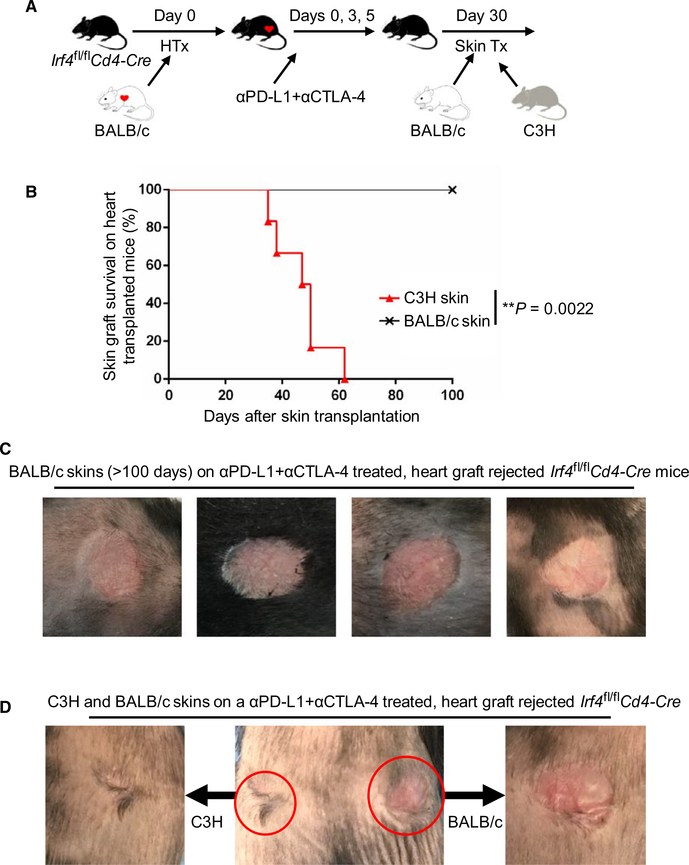FIGURE 3.
Checkpoint blockade does not prevent the establishment of transplant tolerance in Irf4‐deficient mice. Irf4fl/flCd4‐Cre mice were transplanted with BALB/c hearts on day 0 and treated with anti‐PD‐L1 and anti‐CTLA‐4 (αPD-L1 + αCTLA‐4) mAbs on days 0, 3, and 5 to trigger heart graft rejection. Recipients with rejected heart allografts were then transplanted again with BALB/c and C3H skin allografts 30 days after heart grafting (n = 6). A, Schematic of the experimental design. B, The percentage of skin allograft survival after skin transplantation on αPD-L1 + αCTLA‐4 treated, BALB/c heart graft rejected Irf4 fl/flCd4‐Cre mice. **P = .0022; Mann‐Whitney test. C, Representative images of accepted BALB/c skin allografts (>100 days) on αPD‐L1 + αCTLA‐4 treated, BALB/c heart graft rejected Irf4 fl/flCd4‐Cre recipients. D, A representative image of C3H (left) and BALB/c (right) skin allografts on a αPD‐L1 + αCTLA‐4 treated, BALB/c heart graft rejected Irf4fl/flCd4‐Cre mouse

